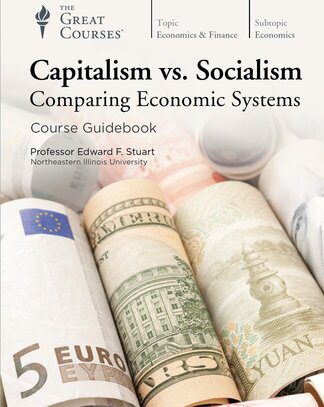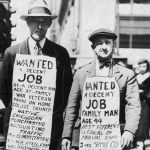Edward F. Stuart is a Professor Emeritus of Economics at Northeastern Illinois University, where he has been a member of the faculty since 1986. He earned his Ph.D. in Economics at the University of Oklahoma, specializing in International Economics and Russian and Eastern European Studies.
Capitalism vs. Socialism : Comparing Economic Systems
The course covers the important economic systems in the world today. It also addresses the historical background and big ideas that created the different economic systems.
Comparative economics
Comparative economics is a fascinating subject that attempts to analyze, and answer, many important social questions.Comparative economics is the study of different systems of economic organization—notably capitalism, socialism, communism, and mixed economies.
Health Care
- In the United Kingdom, the government—through the National Health Service—is the sole provider of health care, and all of its citizens are treated in public hospitals and clinics, paying no out-of-pocket costs. Taxes on all residents are the source of revenue to pay for this government-provided health care.
- In France, all residents get a health-care card for services that may be purchased from a variety of sources at the patient’s discretion. Again, the funding comes from a fairly significant level of taxation. Japan has a similar system to France’s.
- In the former Soviet Union, all citizens typically were assigned to a particular clinic and hospital, where they would receive their medical care. Often, the clinic and hospital were attached to the enterprise where the Soviet citizen worked, and his or her family had little or no choice as to who would be their doctor or surgeon.
Adam Smith, Karl Marx, Keynes, and Friedman
Every economic system is based on the ideas of one or more big thinkers.While there are many important economic thinkers, four men—Adam Smith, Karl Marx, John Maynard Keynes, and Milton Friedman—represent virtually all of the major ideas in practice about how an economy should be organized and how it should work.
Adam Smith
Adam Smith was the first great economist and systematic thinker about economic questions. His most famous book, An Inquiry into the Nature and Causes of the Wealth of Nations, was published in 1776. In this book, Smith outlined many groundbreaking ideas that changed the landscape of economic thinking forever, but three of these ideas serve as the foundation for his view of economics: the nature of wealth, the necessity of free markets, and the benefits of specialization.
Smith put all of his ideas together in the thesis that a rational human economy would be based on exchange, motivated by self-interest. He believed that by appealing to the self-interest of individual producers and businesses, they would produce what society wanted, and the general good of the society would be promoted.
The Invisible Hand
In an economy based on self-motivated exchange, the economy is guided by an invisible hand—a hand that benefits all parties participating in the exchange.
The history of all hitherto existing society is the history of class struggles. Freeman and slave, patrician and plebian, lord and serf, guild-master and journeyman, in a word, oppresor and oppressed. – The Communist Manifesto
Karl Marx
Karl Marx authored many books, pamphlets, and articles—the most famous of which was Das Kapital. Like Adam Smith, Marx set forth several key ideas that would change the face of economics, four of which are class society; the development of capitalist industry; the rise of the working class, or proletariat; and the inevitability of socialism.
Marx believed that the workers’ only hope was to band together in trade unions and in support of political parties formed around these trade unions. The labor parties, social democratic parties, and socialist parties of Europe all derive some of their ideas from Marx.
John Maynard Keynes and Milton Friedman
“Capitalism is the astounding belief that the most wickedest of men will do the most wickedest of things for the greatest good of everyone. ”— KEYNES
“If you put the federal government in charge of the Sahara Desert, in 5 years there’d be a shortage of sand.” -Milton Friedman
Milton Friedman
Milton Friedman was a free market advocate who created an entire school of modern economics at the University of Chicago. He believed that Keynes was wrong and that activist governments created more problems in the economy than they solved.
Friedman derived his ideas from Adam Smith’s belief that free markets—if left to themselves—would produce beneficial results for all of society and that too much government interference, in contrast, would damage the workings of demand and supply and the profit motive. Such damage created economic inefficiency and reduced economic growth.
Gross Domestic Product
The United States has the world’s largest GDP. But that doesn’t mean that it has the richest citizens. The United States distributes its GDP among approximately 320 million residents. You can’t judge living standards by GDP alone; you must adjust for population. GDP per capita, or GDP per person, is calculated by dividing a country’s GDP by its population.
A very small country, Luxembourg, has the world’s highest GDP per capita at more than 100,000 dollars a head, nearly double the U.S. rate.
Socialist vs Capitalist
One goal of socialism was to eliminate, or at least drastically reduce, income and class inequality. Socialists criticized capitalism for creating these differences. In some ways, socialist or communist countries did reduce inequality, though not completely.
One key reason for the rapid economic growth of the American economy in the 19th century was the country’s development of a public education system—first at the primary- and secondary-school levels and later at the college level. Land-grant public universities, which charged little or no tuition, gave many Americans a higher education that was available in Europe only to the very upper classes and nobility.
United States of America
Following World War II, the United States took up greater leadership at home and around the world, most clearly among its European allies. It sought to develop more concentrated and sophisticated efforts to prevent, or at least lessen, the damaging effects of depressions, recessions, and other economic dislocations. The belief, then as now, was that capitalism has a much better chance of flourishing—and even surviving—in a growing and stable economy.
The rise of capitalism was made possible, in part, by the Protestant Reformation and its insistence on the primacy of the individual and the necessity of work and earthly success
Religion and theology have played a large role in the creation of utopian socialist ideas and communities.
Soviet Union: Joseph Stalin
Joseph Stalin gained complete control of the Soviet Union and its Communist Party in the four years between Vladimir Lenin’s death in 1924 and the initiation of forced collectivization in 1928.In the years to come, the chief instrument that Stalin would use to exercise his all-encompassing control was the five-year plan, which attempted to organize all productive activity in the entire Soviet economy.The plan required hundreds of state personnel to calculate all the input and output requirements of the entire economy.
To demonstrate the superiority of the Soviet economy—and, by implication, the superiority of Stalin—gigantic enterprises were created. This would lead to all kinds of problems, such as communication and coordination of enterprise functions.
Soviet Russia pioneered one original method of increasing the industrial labor force: bringing women into factory work in large numbers. In fact, the majority of the adult female population was so employed—a first in history. The United States didn’t achieve such levels until sometime after 1970.
John Maynard Keynes on Capitalism
Before World War I, commerce, investment, and travel were freer than they’d ever been—and freer than they are today. This was true globalization. At the same time, Keynes realized that this system was based on unequal distribution of incomes. He emphasized that this system would never have been as dynamic if income and wealth were equally distributed.
Keynes pointed out that the system was somewhat artificial, based on what he called a double bluff. On one hand, the working classes had to accept that they would get a small share of the wealth and income that they had helped produce. On the other, the rich would receive a disproportionate share of wealth and income—but they would not spend much of it. The rich saved and invested the lion’s share of their incomes and thus contributed to the formation of new capital and industries that fueled the growth of the capitalist system.
The iron law of economics: Economic growth depends on saving. Saving, in economic theory, means not using all of society’s resources for current consumer goods and services, but rather also using some resources to produce machinery and factories that will in the future produce more consumer goods and services.
The Treaty of Versailles
At the end of World War I, the victorious Allied powers—Great Britain, France, and the United States—assembled in Paris to conduct negotiations to formally end the conflict. Yet the terms of this peace agreement—known to history as the Treaty of Versailles—set in motion the chain of events that would lead to the Great Depression and World War II.
Under the terms of the Treaty of Versailles, Germany was required to make extremely large reparation payments to Great Britain and France for many years. Germany was also required to transfer ownership of all of its railroad stock and merchant shipping. It was required to give France and Britain large amounts of coal and foodstuffs. These very punitive measures were designed to cripple the German economy and make life extremely difficult for the German people.
International trade and globalization have many benefits for a capitalist system. Globalization provides wider opportunities for investment and profits and delivers a variety of products and resources at cheaper prices. But globalization also increases the probability that a crisis in one economy will be transmitted to all other economies.
The Paradox of Thrift
At the beginning of a recession or economic downturn, it’s wise for individuals and households to cut back on spending and build up some cash reserves to prepare for the potential bad times. Businesses might cut back on new equipment orders or cancel some expansion plans if they think there will be a decrease in demand for their products.
However, if the behavior is widespread, the macroeconomy will suffer. Total spending will fall, total incomes will fall, production will fall, and unemployment will rise. Keynes labeled this phenomenon the paradox of thrift: In periods of recession or depression, saving—or being thrifty—actually causes more economic hardship throughout the macroeconomy. This was especially true during the Great Depression.
Nazism
The depression in Germany at the end of the 1920s and early 1930s fostered the economic and political conditions for the rise of the Nazi Party. The financial turmoil in Germany was also the proximate cause of the start of the European depression in May 1931.
All the Best in your quest to get Better. Don’t Settle: Live with Passion.




Comments are closed.